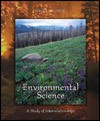 |  Environmental Science: A Study of Interrelationships, 8/e Eldon Enger,
Delta College
Bradley F. Smith,
Western Washington University
Water Management
Chapter ObjectivesAfter reading this chapter, you should be able to:
| Explain how water is cycled through the hydrologic cycle. |
 |  |  | | Explain the significance of groundwater, aquifers, and runoff. |
 |  |  | | Explain how land use affects infiltration and surface runoff. |
 |  |  | | List the various kinds of water use and the problems associated with each. |
 |  |  | | List the problems associated with water impoundment. |
 |  |  | | List the major sources of water pollution. |
 |  |  | | Define biochemical oxygen demand (BOD). |
 |  |  | | Differentiate between point and nonpoint sources of pollution. |
 |  |  | | Explain how heat can be a form of pollution. |
 |  |  | | Differentiate between primary, secondary, and tertiary sewage treatments. |
 |  |  | | Describe some of the problems associated with storm-water runoff. |
 |  |  | | List sources of groundwater pollution. |
 |  |  | | Explain how various federal laws control water use and prevent misuse. |
 |  |  | | List the problems associated with water-use planning. |
 |  |  | | Explain the rationale behind the federal laws that attempt to preserve certain water areas and habitats. |
 |  |  | | List the problems associated with groundwater mining. |
 |  |  | | Explain the problem of salinization associated with large-scale irrigation in arid areas. |
 |  |  | | List the water-related services provided by local governments. |
|



 2002 McGraw-Hill Higher Education
2002 McGraw-Hill Higher Education